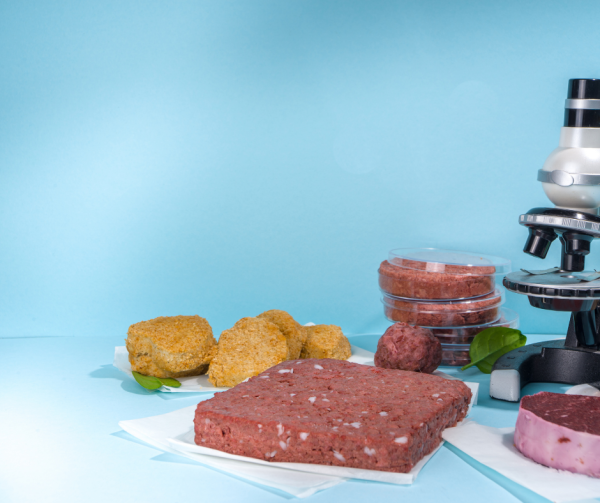Alternative Protein Market Faces Infrastructure Challenges
May 26, 2022
Producers find the lack of production facilities outfitted for meat replacement products prevents an efficient path from product design to market sales.
As demand for plant-based protein products continues to increase, the lack of infrastructure to support that growth has begun to cause trouble for producers.
The alternative protein scene is diverse in both the kinds of product and companies that produce them, ranging from lab-grown and plant-based meats, to proteins from yeast, algae and insects.
Labs that can manufacture the kind of products that alternative protein brands desire are few and far between, especially in the eastern U.S., said Rody Hawkins, president at Improved Nature.
One lab that is specifically outfitted for this kind of production is the NC Food Innovation Lab in Kannapolis, N.C. NC State University manages the lab, but it is a professional organization rather than a teaching facility. Companies are able to work with the lab to bring their plant-based food ideas to fruition.
Bill Aimutis, executive director of the lab, said they work with entrepreneurs and multinational food companies in the plant-based food space. They help companies build ideas for products, develop those products, and then manufacture the products for sale or study.
“We’re utilizing equipment and processes that are typical of commercial production environments most of the time, but we also have quite a bit of flexibility in the way our facility has been designed to make things work,” Aimutis said.
While Sadrah Schadel, chief creative officer of No Evil Foods, thinks that the NC Food Innovation Lab is beautiful and has a multitude of resources for plant-based companies, it may not be that simple.
“When it is a public information sharing, that does create certain limitations if you have [intellectual property],” Schadel said.
Each alternative protein company creates their products in unique ways with different goals, which creates challenges when trying to use the same equipment.
Kesha Stickland, co-founder of The Mushroom Meat Co., said that her company looked into using the NC Food Innovation Lab to produce their products but the costs were too high. She said that newer companies would either have to pay very high costs or relinquish a portion of their rights to the product to use the lab.
“For us, even though it was very tempting to use that equipment, we thought it was too much of a risk,” Stickland said.
Stickland’s company turns mushrooms into meat-like products that mirror shredded chicken, pulled pork, and chunks of beef.
To make these products, Stickland said that they need kitchens and labs. This prevents them from using traditional labs that may not have the right tools or the sanitary standards required in making food products.
Creating the products is one challenge, but packaging them brings additional hurdles. Producers need to partner with contract packagers, or co-packers. Co-packers package and label products so they can be sold in the market.
According to Hawkins, the closest co-packer to North Carolina is in New York. When Improved Nature attempted to find a co-packer that could meet all of their needs, they came back empty handed.
“We have to go into a co-packer and buy equipment for them, and I’m not talking about your complicated in-line microwave stuff, I’m talking about just boiling water,” Hawkins said.
This has forced Improved Nature to work with five different co-packers, as well as ship products overseas to Asia and Europe.
“We really want to grow here, so we need that infrastructure to do those conversions here,” Hawkins said.
Stickland said her company is experiencing similar challenges finding one place to produce and package their alternative protein products. They were told that they would need to use three different co-manufacturers to get their products made. This increases the total cost of creating their alternative protein products, making the market price increase as well.
“And of course the more hands that touch a product, the more expensive it is,” Schadel added. “The goal of bringing products more in line with price parity, that becomes more challenging when you have to ship it from co-manufacturer to co-manufacturer.”
For small producers of alternative protein products, at this stage many are forced to compromise. They may have to settle for products that are not what they would ideally put on the market, but are what their co-packers are willing to produce, Stickland said.
These barriers to entry for small innovators and barriers to growth for larger ones seem to lead both innovators and labs desiring more funding. Aimutis said that there is a need for investment by venture capitalists to merge the gap between producers and production costs.
“We’re very much in a niche because we’re a small pilot plant and most of the entrepreneurs in the state that want to get into this field will leave our facility and have to find a co-manufacturer or build their own manufacturing plant,” Aimutis said.
When asked what he would invest in if given a large sum of funding, Hawkins said that he would focus on getting people over the hump between idea and product creation. This kind of investment would support the co-manufacturing and infrastructure hurdles of production.
“To me, the money needs to be spent not on the creative side, the inventing side,” Hawkins said. “A lot of people have good ideas but they need to figure out how to get that to the market and how to sustain themselves in the marketplace.”
About the Author
This article was written by Katherine Mackinnon, an UNC senior journalism major from her attendance at the 2022 UNC Cleantech Summit.
